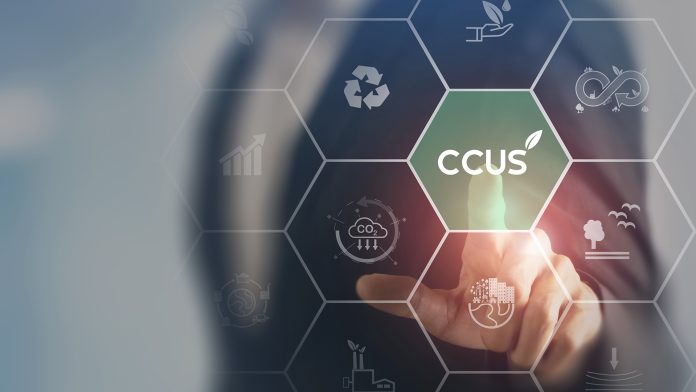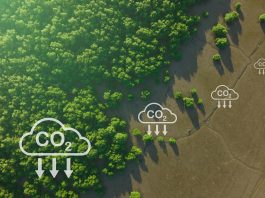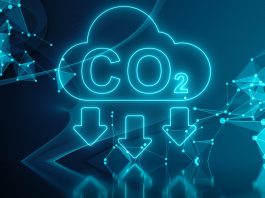The ConsenCUS Project is set to lead the way in electricity-based CCUS technologies to enable a sustainable future.
Carbon is one of the most important elements in the world. From providing energy to being in the very food that sustains us, it is abundant everywhere. However, when providing us with energy or materials, we also produce carbon emissions that change our climate.
The 2050 net zero carbon targets are, therefore, vital to humanity’s continued existence, and to mitigating the damage that we have already started to cause our planet.
As such, there are many initiatives, programmes, and innovations aimed at reducing carbon emissions. Yet, not as many focus on being completely carbon neutral.
The ConsenCUS project
A consortium comprised of nineteen partners in academia and industry, ConsenCUS is a project in Carbon Capture, Utilisation, and Storage (CCUS) that aims to achieve true net zero carbon technologies and make them widely available for industry everywhere.

The locations of these partners include: The Netherlands, Denmark, United Kingdom, Romania, Greece, China, and Canada. They have come together with €13m of funding over four years under the Horizon 2020 programme.
They aim to achieve this by ConsenCUS: CarbOn Neutral cluSters through Electricity-based iNnovations in Capture, Utilisation and Storage.
An example of this is their net-zero Carbon Cluster approach, planning for regions that employ CCUS technologies and bringing together industries, users, storage, and local communities to not only reduce carbon emissions, but bring them down to net zero. The core ingredients of these Clusters will be as follows:
Carbon capture and utilisation
Using environmentally friendly chemicals and, crucially, renewable electricity, carbon emissions will be captured in industry, such as within factories. Water-soluble potassium hydroxide will be used as a sorbent to capture carbon dioxide molecules, and will be easy to separate again using a ‘pH swing.’
From there, the carbon dioxide molecules can be electrochemically converted into much more useful and less harmful chemicals, such as potassium formate. Potassium formate can be used as a preservative, or can be used in protein or fuel production.
Using (renewable) electricity for both the CO2 capture and conversion process allows for an overall net-zero carbon process, which does not rely on residual or fossil heat like competitive technologies.
Carbon dioxide storage and transportation
With the amount of carbon dioxide currently being produced, it is unlikely that all of it will be able to be converted into more useful things. This is what makes carbon storage important, as it still cannot just simply be released into the atmosphere.
The subsurface is under investigation to make storage areas for carbon dioxide, and is showing promising results. ConsenCUS is modelling whether certain types of rock may be suitable for permanent, but also temporary carbon dioxide storage, in case there will be a need for it in the future.
All these aspects will be connected safely and efficiently via secure transportation networks between the emitters, users, and communities, utilising pipelines, trucks or ships. Planning such infrastructure for two clusters (North-West and South-East Europe) is one of the key activities in ConsenCUS.
Community engagement
To understand what citizens within the Net Zero Carbon Clusters think about CCUS as a technology, an array of community events are being organised in the Netherlands, Denmark, the UK, Greece, and Romania.
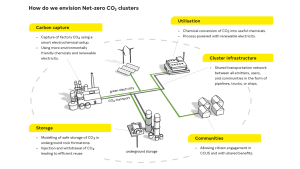
The goals of the community events are to understand the awareness, concerns, and needs of community members concerning the ConsenCUS project’s industrial innovations and CCUS developments more generally. Furthermore, insights and knowledge of community members will help better understand what social, economic, and environmental benefits, risks, and impacts CCUS can have for communities.
To learn from and understand different communities’ perspectives about CCUS, one of the methods used is a conversation game called PlayDecide. The game is useful when introducing and discussing complex issues and technologies with groups of people who do not have in-depth technical information about a topic.

Results from the project
In 2023, the ConsenCUS demonstration plant was opened at Aalborg Portland’s cement factory in Aalborg, Denmark. This demonstration plant is designed to capture up to 100kg of CO2 per hour and has already shown that carbon dioxide emissions can successfully be captured and converted into formate or formic acid, all through using renewable electricity. This monumental achievement shows that this technology is not only viable, but also has the potential to be scaled up.
More optimisation will be done on this plant, as it moves to two more sites within two different industries that need to get to net-zero emissions: The oil refinery site of OMV Petrom near Ploiesti, Romania, and Grecian Magnesite in Yerakini, Greece, who along with Aalborg Portland, have all committed to developing and utilising these techniques for a better, carbon-neutral future. The focus for the second and third demonstration campaigns is to reach competitive specific energy consumption (again, with electricity rather than heat-based), the proposed scale, and to demonstrate versatility with respect to the flue gas of different industries.
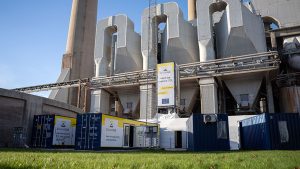
The information from this demonstration plant will also inform engagement with local communities and the impact of CCUS upon them.
Also in 2023, the first Policy Paper was published based on the findings so far. This paper goes over the preliminary outcomes of the ConsenCUS project, and discusses the considerations to be made when deploying CCUS technologies throughout the EU. These considerations are as follows:
- The resource and energy use associated with different CO2 capture and conversion processes is different, and therefore should be a key criterion for both policy and permitting.
- CCUS pathways (including sub-surface usage) must be fit for eventual operation in a net-zero world.
- Any impact assessment of CCUS strategies should include Scope 2 and 3 emissions from the entire CCUS chain.
- The CCUS technology pipeline must include multiple scalable, modular capture technologies, given the variety of emitters and industries where CCUS will play a role in decarbonisation.
- Shared CO2 transport and storage infrastructure must be subject to rigorous standards and models for sharing liability from CO2 sources and end-users connected to the infrastructure.
- Member States should be mandated to set out a comprehensive strategy and funding framework for research and development, innovation, and deployment of CCUS, fostering innovation and learning-by-doing.
- The involvement of local communities and stakeholders, including through capacity-building activities, should be a key requirement of CCUS projects.
These considerations show a commitment to both net zero carbon technologies, but also ensuring that the people and environment in surrounding areas are happy and involved with ConsenCUS’ work.
The ConsenCUS project is in its final stages now, and with an active demonstration plant and developing policies, is confident that it can lead the way in CCUS technology and make the world a better place.
Want to learn more about our results? Come to the European Water Technology Week (September 24, Leeuwarden, NL) or save the date for our final ConsenCUS conference, 25-26 February, 2025, Brussels, BE).
This project has received funding from the European Union’s Horizon 2020 research and innovation programme under grant agreement No 101022484
Please note, this article will also appear in the 18th edition of our quarterly publication.

